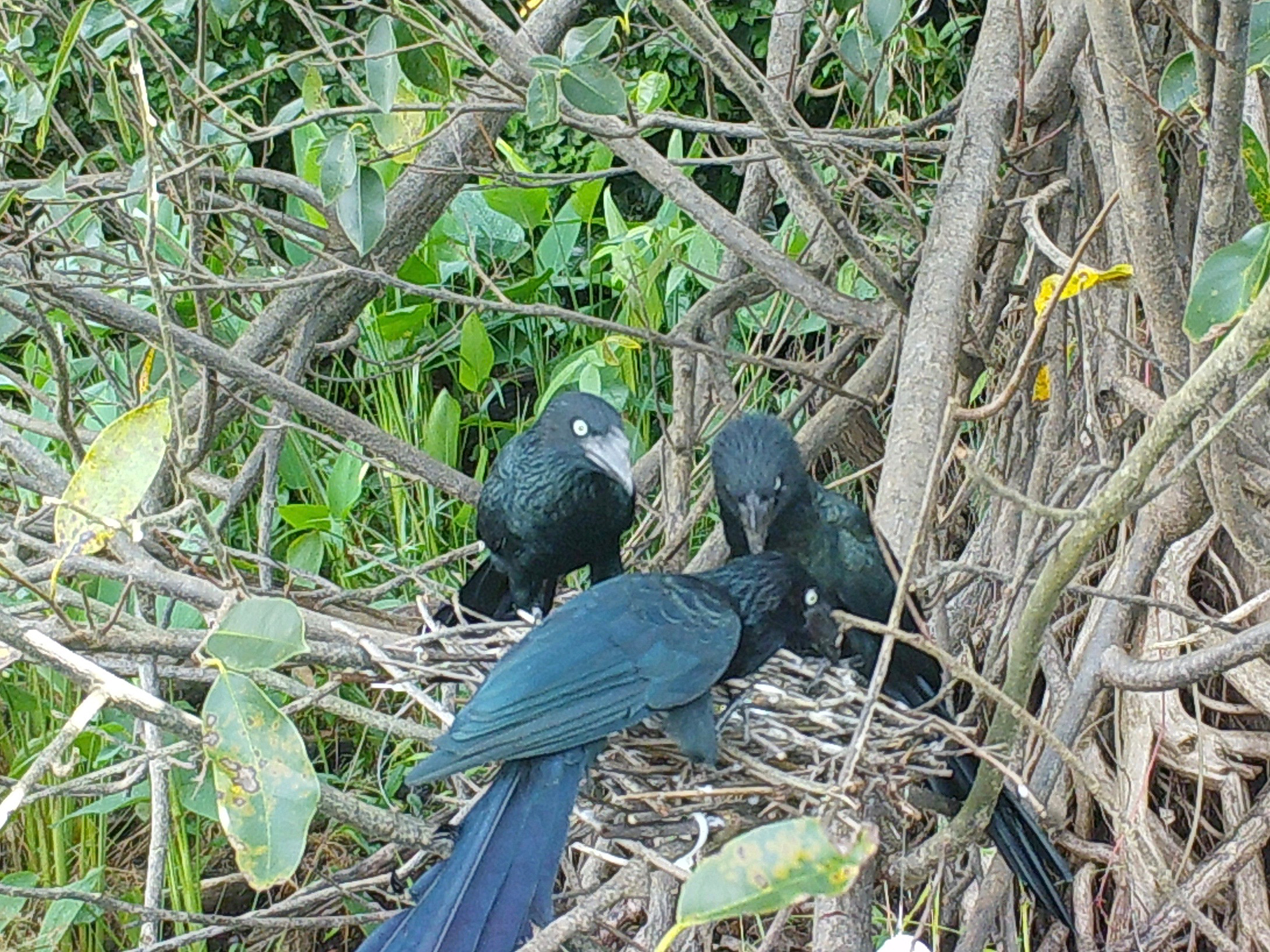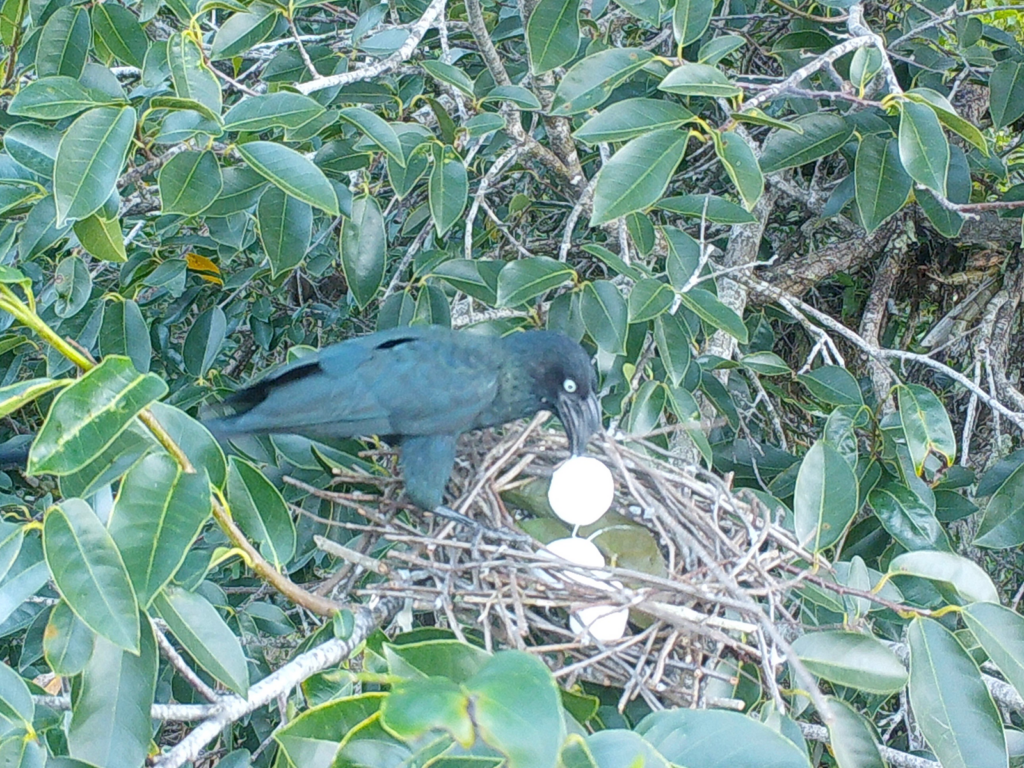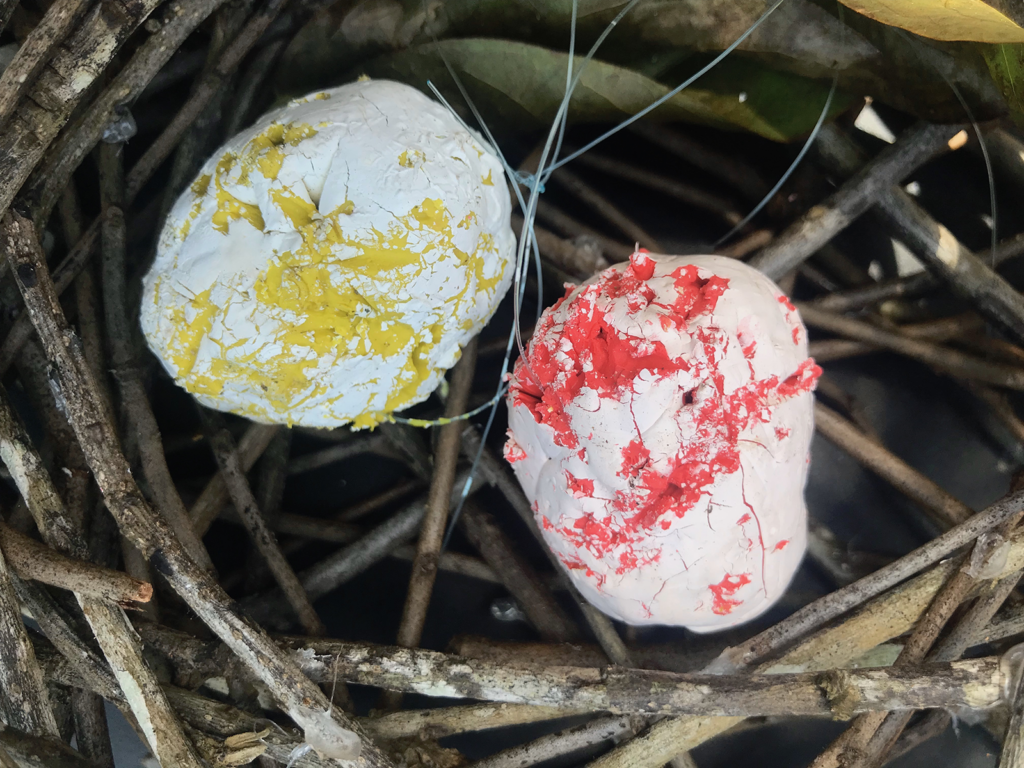By Danielle K. Almstead, Amanda G. Savagian, and Maria G. Smith
Linked paper: Inter-group conflict in a cooperatively breeding bird: new insights into “home field advantage” by Danielle K. Almstead, Amanda G. Savagian, Maria G. Smith, and Christina Riehl, Ethology
After observing promising signs of predation at several of her experimental nests, undergraduate researcher Danielle Almstead was excited to look through her camera trap photos to discover the culprits. Throughout our study site in Central Panama (managed in partnership with the Smithsonian Tropical Research Institute), we had installed artificial nests, complete with painted clay eggs, to test the effect of nest height on predation risk in the Greater Ani (Crotophaga major), a communally breeding Neotropical cuckoo. Predation accounts for around 80% of nest failures for Greater Anis each year, with white-faced capuchins (Cebus capucinus), snakes (Pseustes spp., Spilotes spp.), and Yellow-headed Caracaras (Milvago chimachima) acting as the most frequent perpetrators.
Clicking through the photos one by one, Almstead was shocked to discover that anis themselves had been responsible for the destruction. Grasping the clay eggs in their large bills, the anis had successfully tossed several over the side of the open-cup nests; those that remained were heavily punctured and, had they been real eggs, would have been completely destroyed.
We had inadvertently obtained the first photographic evidence of egg destruction by Greater Anis, an intriguing behavior for which there had previously been only limited and circumstantial evidence. What had started as a study on optimal nest placement had transformed into an unexpected opportunity to better understand the dynamics underlying intergroup competition. Greater Anis breed in groups of two or three mated pairs, all of whom share a single nest in which they raise their communal brood. Groups defend exclusive nesting territories that are found in loose “neighborhoods.” We had strongly suspected that neighboring groups were responsible for the eviction and destruction of full clutches that we sometimes observed in the field, but we had never directly observed anis ejecting the eggs. Without such first-hand observations, it was difficult to confirm who was responsible for the destruction or the reason for it.
Instead of writing off the nest height experiment as a failure, or conducting it again elsewhere to avoid interference from anis, we took advantage of the serendipitous opportunity to learn more about how and why anis destroy each other’s clutches. The camera trap data revealed that only two of the twelve artificial nests were visited by nest predators, white-faced capuchins, who did not destroy any eggs. Five of the nests had instead been discovered by anis, who ejected the eggs in three of the nests either by rolling them over the nest rim or by grasping them with their bills and dropping them outside the nest. Anis found the artificial nests quickly, in as little as two hours but always within a few days, suggesting that they are keenly aware of the activities of their neighbors. We documented both breeders and non-breeding helpers at nests, and we observed anis ejecting eggs both alone and in groups. They often returned to the nest even after destroying the clutch of eggs, perhaps to continue to keep a close watch over their neighbors.
In accordance with previous work on clutch destruction in this species, the perpetrators did not subsequently nest in the territories of the groups they attacked, suggesting that the purpose of nest destruction might be to reduce resource competition and possibly local predation risk rather than to usurp a nesting territory. However, despite our detailed observations of clutch destruction, several questions remain. What is the role of the attacked group in defending their nest from neighboring groups? How do group members recruit each other to destroy the clutches of close neighbors? Does destroying a neighbor’s clutch increase the attacker’s reproductive success? Solving these mysteries could help to further elucidate the causes and consequences of egg destruction and reveal more about the intriguing interactions that take place within Greater Ani neighborhoods.
Our unexpected research trajectory highlights the importance of flexibility and keeping an open mind. As every field biologist knows, things rarely go as planned. But sometimes what may at first seem like an experiment gone awry or a disappointing lack of data just might turn out to be an exciting opportunity to shed some light on a fascinating new question.
This work was supported in part by an Alexander Wetmore Memorial Research Award, a student research grant from the American Ornithological Society.


